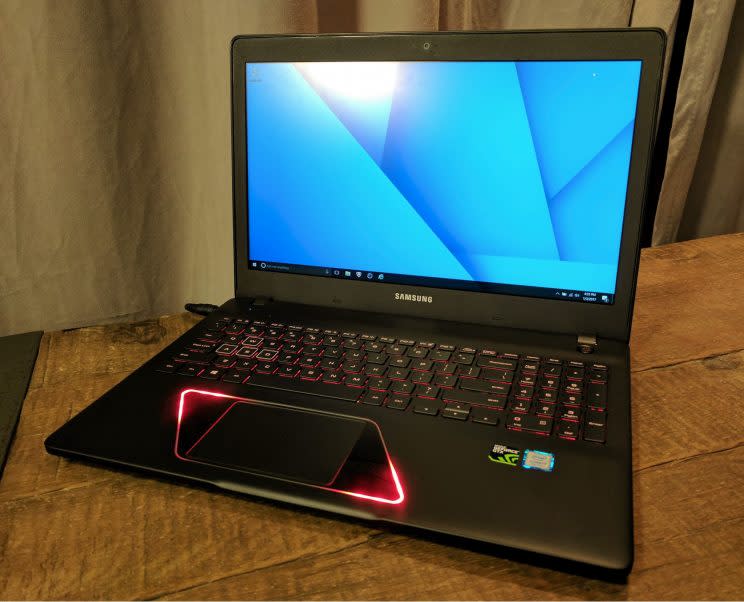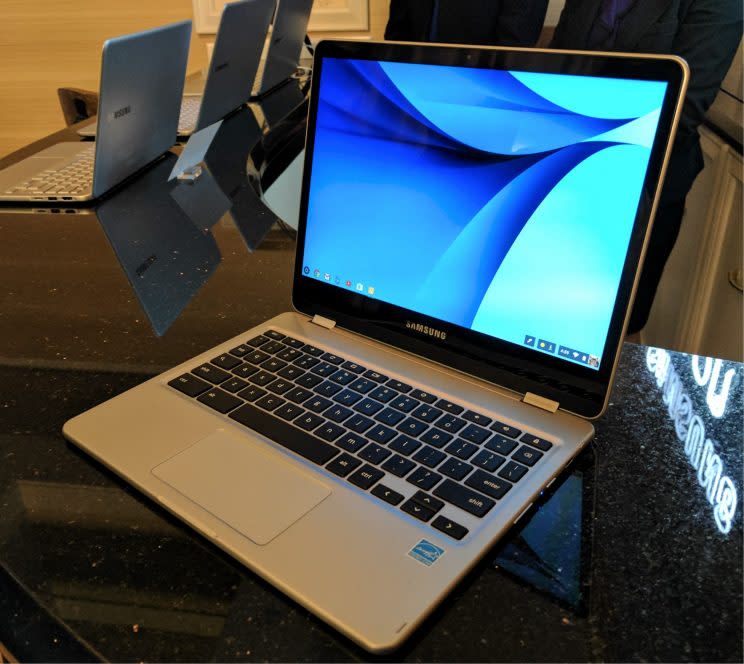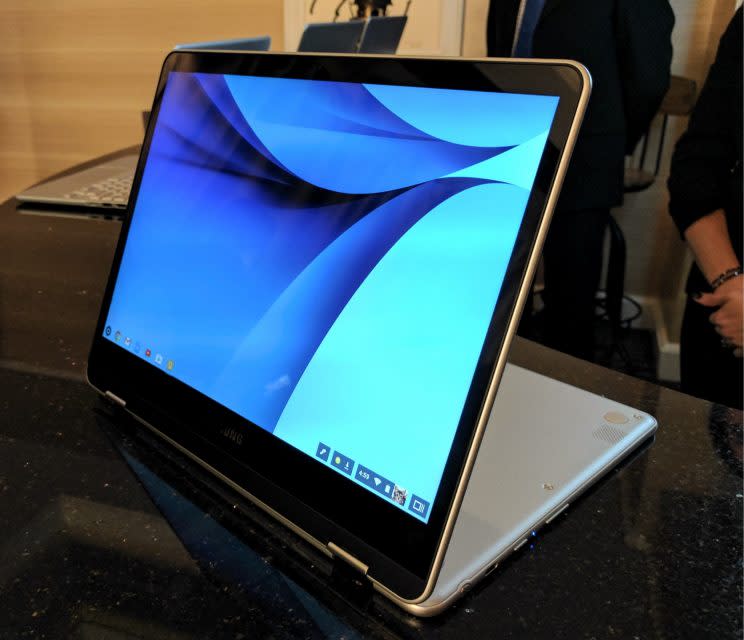Samsung unveils gaming notebooks and a partnership with Google
The big themes at CES 2017 might be VR, self-driving cars and smart home accessories, but laptops are still a huge part of the show. Case in point: Samsung announced a a new line of gaming notebooks and a partnership with Google (GOOG, GOOGL) to roll out two new Chromebooks that can run Android apps.
First up, Samsung’s new gaming laptops, the Notebook Odyssey 15 and the Notebook Odyssey 17. Both systems are meant to make gamers’ hearts sing with powerful Intel Core i7 desktop-class processors that’ll have players burning through their favorite titles.
The Odyssey 15 can get up to 32GB of RAM, while the 17 gets up to 64GB, which is just shy of aggressively unnecessary. In terms of storage, the 15 gets a 256GB solid-state drive and a 1TB hard-disk drive. The 17 gets a 512GB SSD and a 1TB HDD. That’s a whole lot of storage.
Samsung says it wants gamers to be able to upgrade their machines over time. To do that, the company has made it easy to access the Odyssey 15 and Odyssey 17’s RAM and storage drive so you can swap them out with ease.
As far as graphics go, the Odyssey 15 comes with an Nvidia (NVDA) GTX 1050 chip, while the 17’s chip is still to be determined — though it will likely be a bit more powerful than the 15’s.
The only place the Odyssey systems seem to lag behind some of their gaming laptop competitors is with their displays. Unlike systems from HP, which offer 4K resolution panels, the Odysseys come with 1080p screens. That’s not exactly a serious issue. In fact, when I played “Overwatch” on the Odyssey 15 it looked fantastic. But if you’re looking for a 4K monitor it’s an important to note you’re not getting one.

Naturally, Samsung’s Odyssey 15 and 17 also look like gaming laptops. That means they come with backlit logos on their display panels and backlit touchpads.
The Odyssey 15 also gets red backlighting on its keyboard, while the 17 gets multicolored backlighting for its keys.
Why is Samsung getting into the gaming PC market? Because as the rest of the PC market is falling, gaming PC sales are doing incredibly well. That’s because gamers always want the best machines, and so they upgrade their systems more frequently than your average consumer.
Chromebook Plus and Pro
The Chromebook Plus and Pro are completely different from the Odyssey systems. These are slim, lightweight machines that are designed for maximum portability.

Samsung worked closely with Google this time around to ensure that the Plus and Pro are the first Chromebooks that are capable of running the millions of Android apps in the Google Play store right out of the box. That means you’ll be able to do things like access Google Keep, play “Clash of Clans” and use Adobe apps just like you would on your smartphone or tablet.
Speaking of tablets, both the Pro and Plus are actually 2-in-1 devices, meaning you can use them as oversized Android slates. What’s more, the Chromebooks’ 12.3-inch 2400 x 1600 resolution displays look downright beautiful.
Samsung says it will also include a stylus with the Chromebooks so you can draw and write on their displays.
At just 2.4 pounds each, the Pro and Plus are exceedingly lightweight, so you won’t throw your back out carrying them around town. Both systems also feature 2 USB C ports, as well as a microSD card reader.

So what’s the difference between the Chromebook Plus and Chromebook Pro? Well, the Plus comes backing an ARM-based processor, while the Pro gets and Intel Core M3 chip. That means the Pro will be the more powerful device, though the Plus won’t exactly be a slouch.
Both systems also get 4GB of RAM and 32GB of onboard storage.
The Chromebook Plus will be available in February for $450. Pricing for the Chromebook Pro has yet to be determined, but you can expect the system to go on sale later this spring.
More of Yahoo Finance’s CES coverage:
Dell is kicking off CES 2017 with slick new laptops that double as tablets
What to expect this week at CES, the world’s biggest gadget show
Email Daniel at [email protected]; follow him on Twitter at @DanielHowley.
